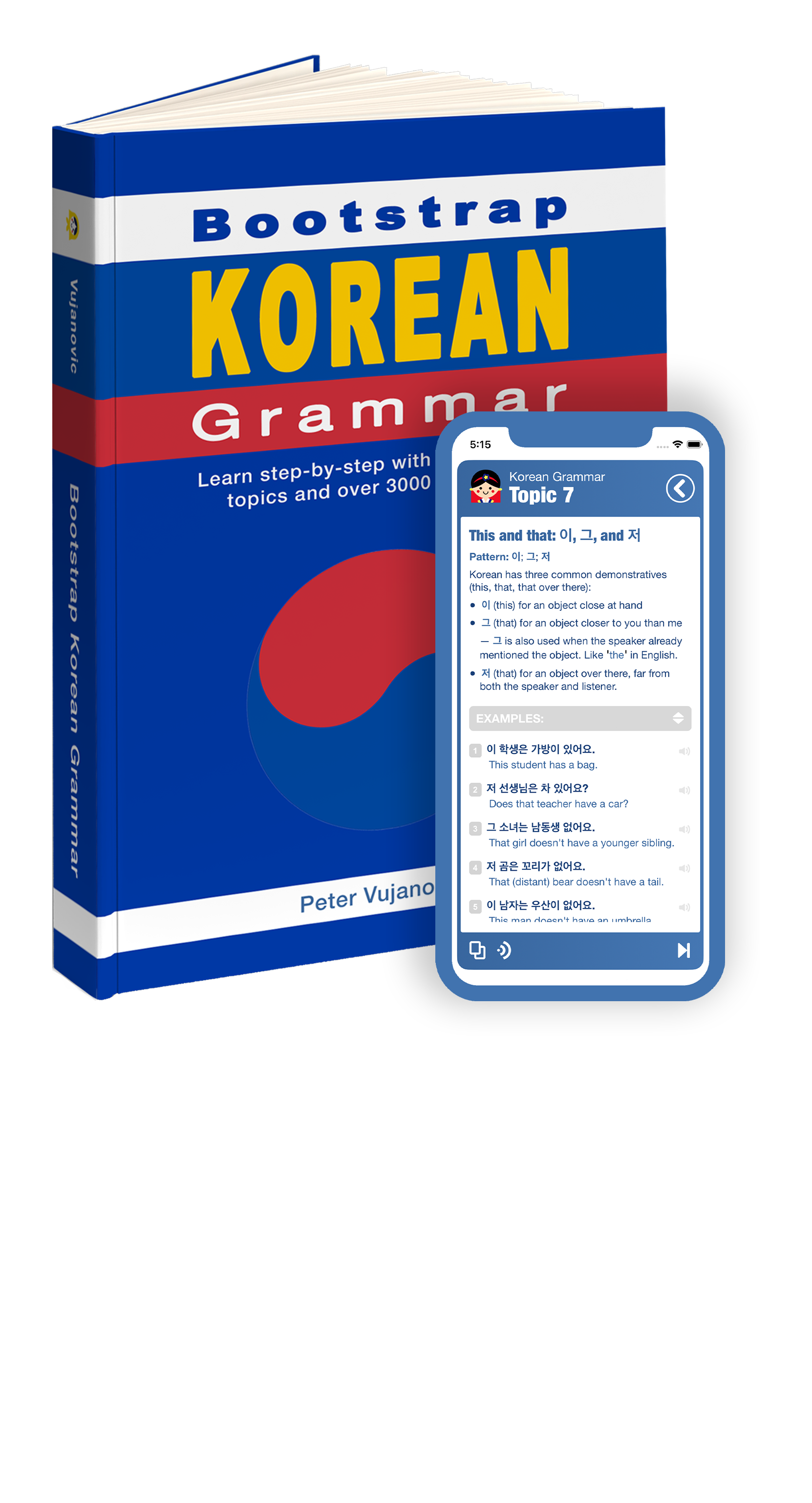Korean grammar - Adjective 하다 verbs |
|||
|
|||
Adjective 하다 verbs are formed by combining an adjective + 아/어 + 하다. The most common ones are: • 좋아하다 - 'to like' • 싫어하다 - 'to dislike', 'to hate' - used for both people and things • 미워하다 - 'to hate' - used only for people, not things • 무서워하다 - 'to feel scared' • 어려워하다 - 'to have trouble with' • 즐거워하다 - 'to feel pleased', 'to enjoy oneself' To negate these verbs, 안 and 못 is added before the whole verb - theses adjectives/verbs are never split. |
| Examples: | |
|
그녀는 김치를 좋아해요.
She likes kimchi. |
|
|
그는 김치를 안 좋아해요.
He does not like kimchi.
|
|
|
그는 왜 김치를 싫어해요?
Why does he dislike kimchi? |
|
|
그는 김치를 안 싫어해요.
He does not dislike kimchi.
|
|
|
아버지는 영화를 싫어해요.
(My) father hates the movie. |
|
|
개는 폭풍을 무서워해요.
The dog is scared of the storm. |
|
|
고양이는 폭풍을 안 무서워해요.
The cat is not scared of the storm.
|
|
|
저는 상사를 어려워해요.
I have a hard time with my boss. |
|
|
아이가 매우 즐거워해요.
The child enjoys himself a lot. |
|
|
그녀는 숙제를 싫어해요.
She hates homework. |
|
|
그녀는 청소를 안 싫어해요.
She does not hate cleaning.
|
|
|
선생님이 저를 미워해요.
The teacher hates me. |
|
|
나는 그녀를 안 미워해요.
I do not hate her.
|
|
 |
|



